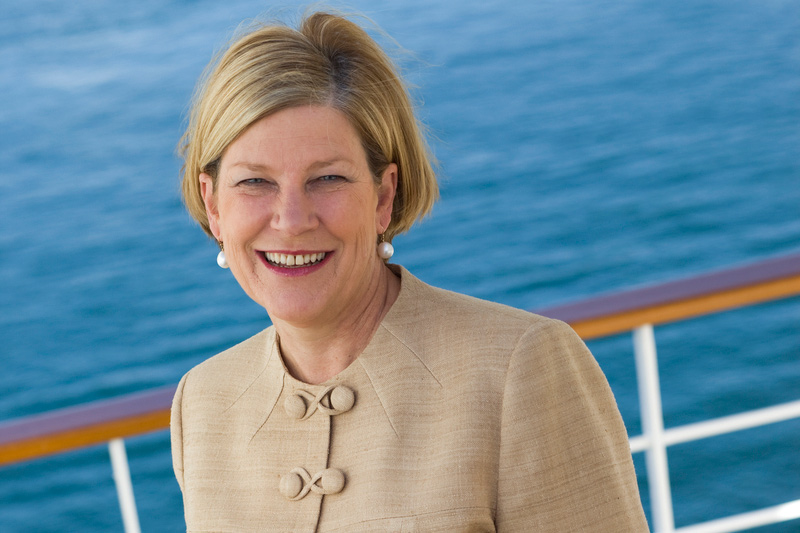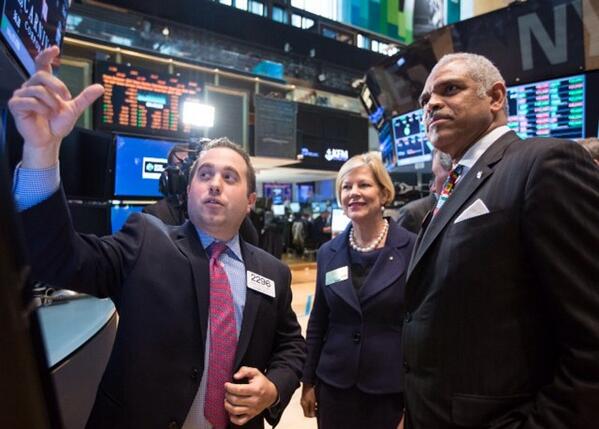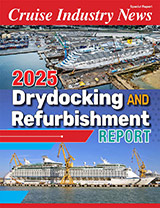 By 2016, Australia is expected to produce one million cruise passengers annually, which will give it the highest penetration of any market in the world. But Ann Sherry, CEO of Carnival Australia, does not expect the growth to stop there. “I set the one million target when we only had 120,000 passengers,” she told Cruise Industry News in an exclusive face-to-face interview. (Last year, Australia and New Zealand generated 760,000 passengers.) “I do not think it will stop. Cruising is still a small part of our holiday market. There is no reason why we should not reach a 10 percent penetration level.”
By 2016, Australia is expected to produce one million cruise passengers annually, which will give it the highest penetration of any market in the world. But Ann Sherry, CEO of Carnival Australia, does not expect the growth to stop there. “I set the one million target when we only had 120,000 passengers,” she told Cruise Industry News in an exclusive face-to-face interview. (Last year, Australia and New Zealand generated 760,000 passengers.) “I do not think it will stop. Cruising is still a small part of our holiday market. There is no reason why we should not reach a 10 percent penetration level.”
But to keep growing the Australian market, she said there are some potential roadblocks that need to be addressed, particularly port infrastructure. “If we can sort that out, cruising can become the number one holiday choice among Australians,” she said. “That is not an outrageous proposition.”
Sherry is responsible for the Carnival brands of P&O, Princess, Carnival, Holland America, Seabourn and Cunard in Australia. When she first joined the company in 2007, there was only P&O Cruises, which had two old and smaller ships. Since then its fleet has been renewed and expanded, and the other brands introduced to the market.
“Next year,” she said, “we are adding the Golden Princess, so we will have five Princess ships homeported most of the year.”
 To continue to grow, Carnival Australia is segmenting the market based on a number of variables, including customers’ lifecycle and itinerary diversification. She said: “In the past three years we have opened up 50 new destinations, most of which are otherwise hard to reach, as part of an effort to continue to give people reasons to cruise. We are also evolving the onboard product: we have put adventure parks on the P&O ships and a boot camp at sea on the Carnival Spirit, and we are doing a lot with food, offering food and wine activities. In addition, weddings at sea have become popular as have business group travel and special events, such as the Melbourne Cup and the Australian Open Tennis. A cruise makes these events more accessible and more affordable. And again, provides people with another reason to cruise.”
To continue to grow, Carnival Australia is segmenting the market based on a number of variables, including customers’ lifecycle and itinerary diversification. She said: “In the past three years we have opened up 50 new destinations, most of which are otherwise hard to reach, as part of an effort to continue to give people reasons to cruise. We are also evolving the onboard product: we have put adventure parks on the P&O ships and a boot camp at sea on the Carnival Spirit, and we are doing a lot with food, offering food and wine activities. In addition, weddings at sea have become popular as have business group travel and special events, such as the Melbourne Cup and the Australian Open Tennis. A cruise makes these events more accessible and more affordable. And again, provides people with another reason to cruise.”
Sherry has also gotten Carnival Australia involved with communities through Save the Children, building health care and child care facilities on some of the Pacific islands the ships are calling at. “We add a one dollar charge to each passenger ticket and donate the money,” she said. “This way, the communities get something tangible from the tourists.
“We are looking at buying local produce and water, as well as maybe coffee. We hope to become a customer and contribute that way. We are as important to them (destinations) as they are to us. It is important that we work together so they want us to come back.”
With seven ships year-round in addition to seasonal deployment, Carnival claims an 80 percent share of the market. Looking forward, Sherry said she is motivated by “more,” that is, she sees more potential. “There is more we can do and achieve. I am excited about the actions being taken by the corporation to maximize and optimize what we are doing.
“In Australia, we have all the preconditions to be a good cruise market; most people live by sea, it is easy to get to the ships, and cruising has become fashionable again,” she said. “We are also part of and on the edge of Asia; we are seeing more Asian groups on our ships, and Australians are among the largest passenger groups on Asian cruises. There is a dynamic around Asia that is promising.”
For the full interview, please see the upcoming summer issue of the Cruise Industry News Quarterly Magazine.




